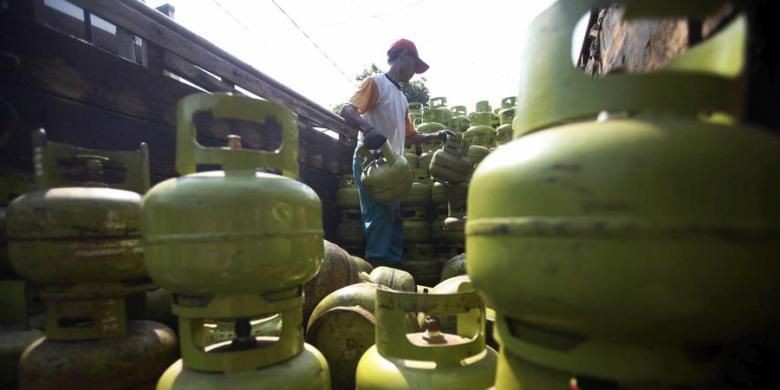Popular Reads
Top Results
Can't find what you're looking for?
View all search resultsPopular Reads
Top Results
Can't find what you're looking for?
View all search resultsDistribution issues persist for low-cost 3 kg gas canisters
Change text size
Gift Premium Articles
to Anyone
P
roblems surrounding the distribution of subsidized 3-kilogram liquefied petroleum gas (LPG) canisters appear to be never-ending, with the authorities unable to come up with solutions.
House of Representatives members and government officials discussed the matter, recently.
Three kg green gas canisters were supposed to be produced for low-income families at Rp 12,750 each. But, in reality, the canisters were sold at a much higher price.
During the hearing, Democratic Party lawmaker M.Nasir also questioned the government as to why the gas canisters had been priced that high.
“Based on a regulation, the [3-kg] gas canister is only for poor people. So [after years of cases of higher prices in the market] I think it shows failure and the issue should be resolved as soon as possible,” Nasir said.
The maximum price of a subsidized LPG canister is Rp 12,750, as stipulated in Energy and Mineral Resources Ministerial Regulation No. 28/2008.
The regulation also stipulates that eligible buyers are only household and small enterprises.
The problem is that end-users pay more than the maximum price owing to the presence of middlemen.
According to state energy holding company Pertamina, which is the sole distributor of the gas canisters, the supply of subsidized gas starts from Pertamina and goes to a LPG bulk filling and transportation station (SPPBE), which can be run by a private entity.
The SPPBE is tasked with filling the canisters and distributing them to agents, which may also be private entities. The agents then distribute the subsidized gas products to LPG terminals.
The LPG terminals distribute the subsidized gas canisters to end-customers, said Pertamina president director Nicke Widyawati, recently.
“Currently we have 535 SPPBE. For the LPG terminals, we have around 154,000 across Indonesia,” she said during a hearing last week.
The problem is that regulations on subsidized LPG canisters only stipulate the maximum price at Rp 12,750 per canister -- which could be higher, depending on regional administrations’ maximum prices – for LPG agents.
Djoko Siswanto, director general at the Energy and Mineral Resources Ministry, acknowledged the situation, saying the government was not able to supervise agents because the government’s control over maximum prices ended at LPG terminals.
“I noticed recently many subsidized gas canister retailers on the streets. That’s why the prices for end-customers could be different. What we can’t control is the price from the agents to terminals [the supervision of which is in the hands of regional administrations,” he said. Subsidized gas canisters sold legally online are also easy to obtain, making it hard for the government to track whether the products are distributed to the eligible recipients.
Nasir of the NasDem Party said a another problem that might lead to the uncontrolled price of subsidized gas canisters was the existence of the Association of Fuel Station Owners (Hiswana Migas), the members of which allegedly accepted bribes in exchange LPG terminal establishment approval.
“There was a report that in North Sumatra of payment of Rp 160 million in relation to a LPG terminal business and the money was transferred to the chairman of the local chapter of Hiswana Migas,” he claimed.
“In Riau, many LPG terminals asked for money, which they said was for the cost of the canisters. But, it was too much.”
However, Nicke of Pertamina stated that the company had never given such authority to Hiswana Migas and that there was regulation to justify the latter’s action.
Hiswana Migas chairman Eri Purnomohadi could not be reached for comment over the allegations.
In response to the situation, Minister Ignasius Jonan said the government was finding a long-term solution for the issue.
“We’re still discussing [the possibility of gas canisters being distributed in the form of e-money to the eligible recipients],” he said, adding that a possible short-term solution was to shut down illegal LPG terminals with the help of the National Police.
ReforMiner Institute researcher Pri Agung Rakhmanto told thePost that Jonan's idea was not likely to be implemented smoothly as further clarity was needed in regard to those eligible for the subsidy.
"Another option is to provide unsubsidized 5-6 kg LPG canisters [for customers ineligible for the subsidized canisters] and to not increase the burdening volume of 3 kg LPG canisters" he said.










